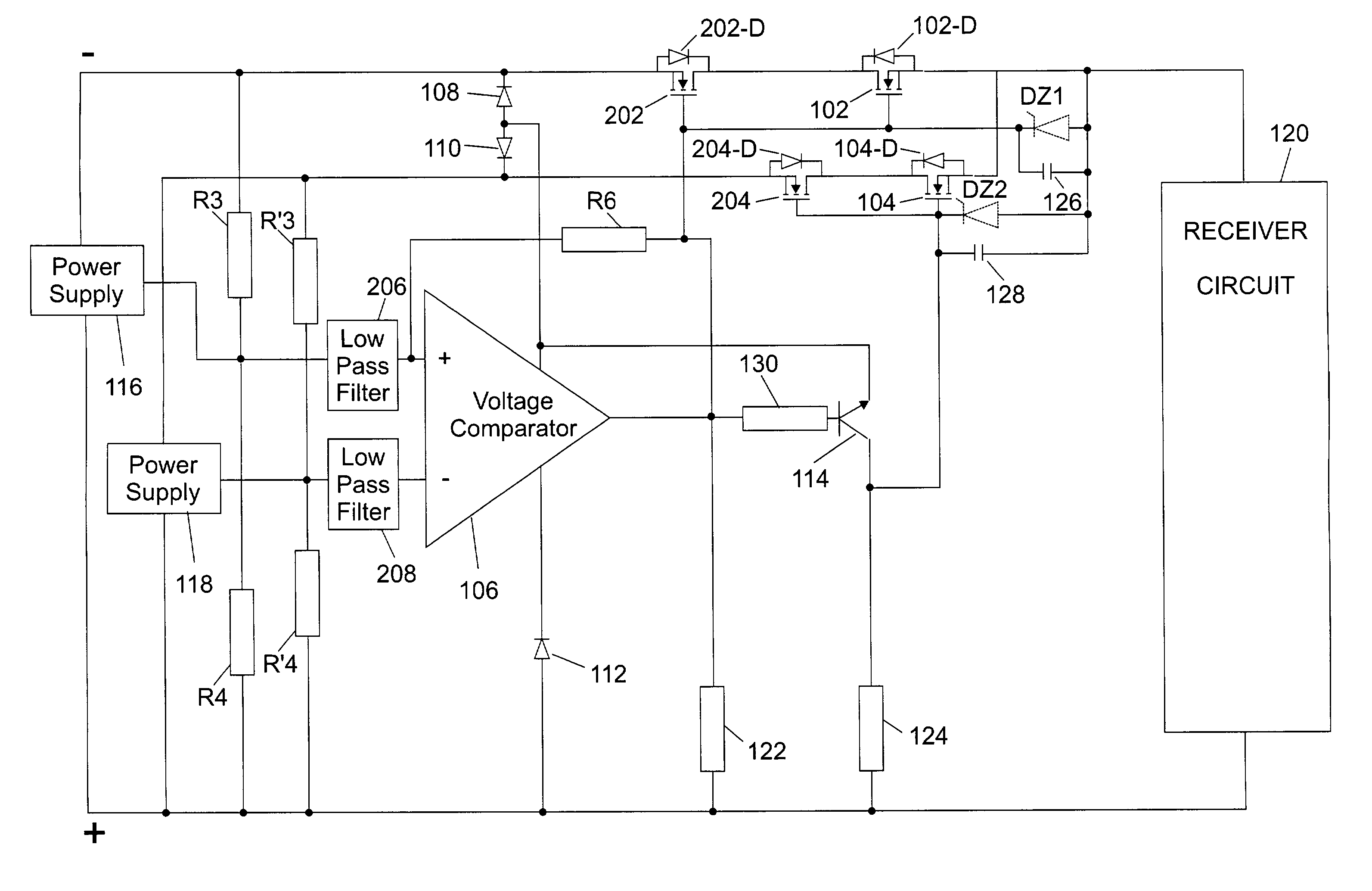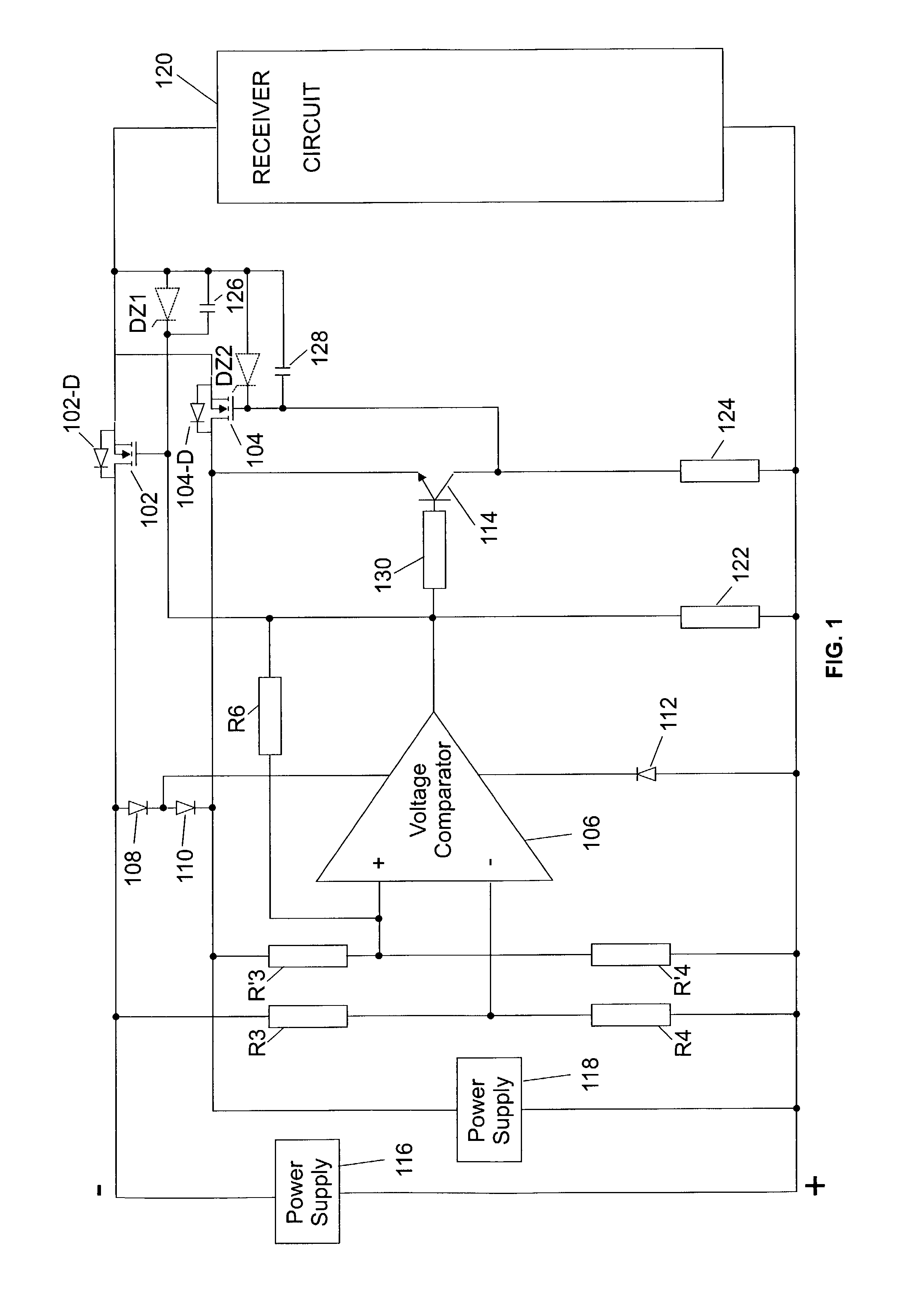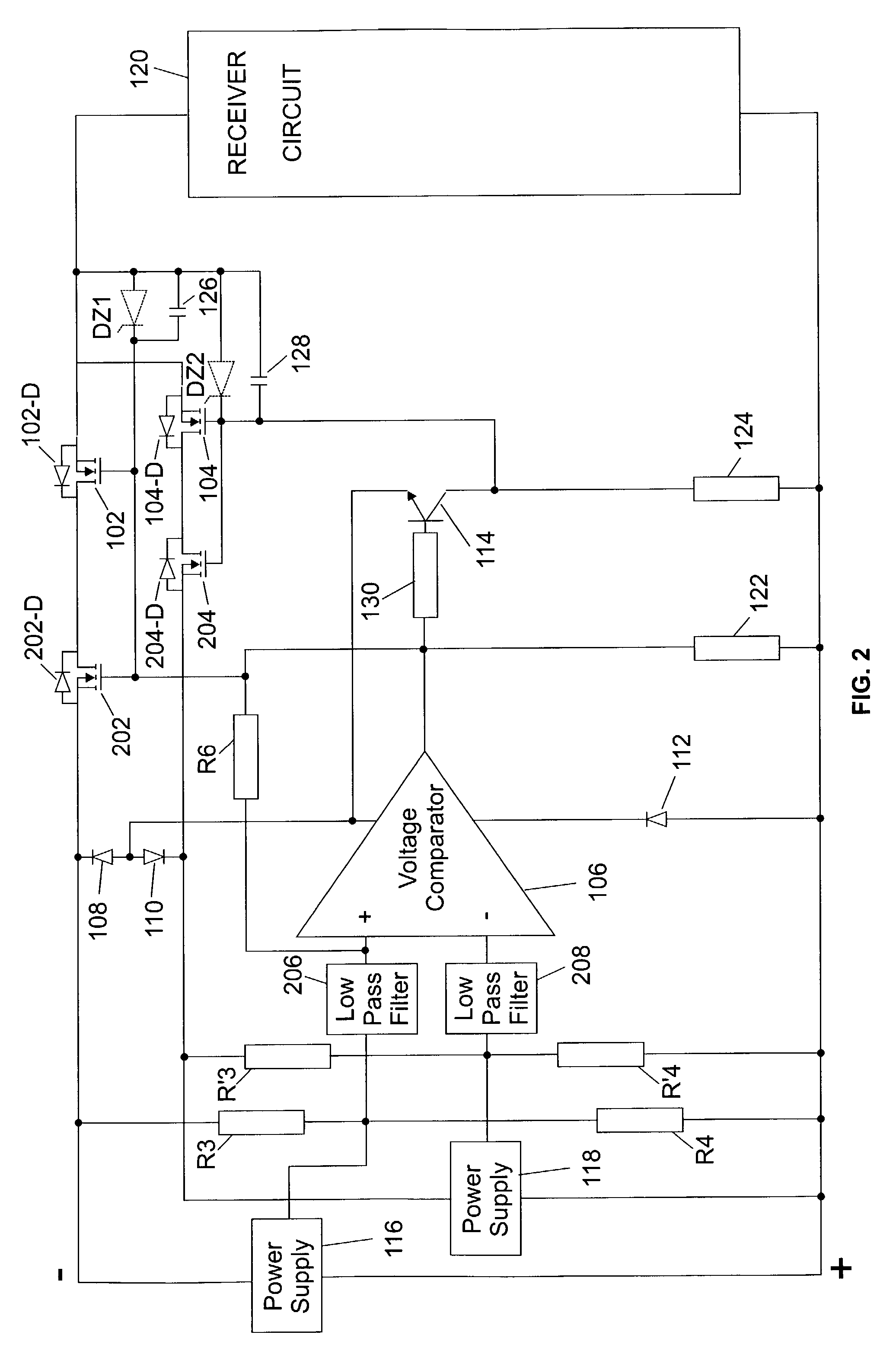System and method for redundant power supply connection
a power supply and system technology, applied in the field of system for connecting redundant power supplies, can solve the problems of reducing the global efficiency of the circuit, damage to the power supply, and the device is therefore not able to limit the current variation at the receiver, so as to reduce the transient over voltage and fast current variation
- Summary
- Abstract
- Description
- Claims
- Application Information
AI Technical Summary
Benefits of technology
Problems solved by technology
Method used
Image
Examples
second embodiment
[0032]Referring now to FIG. 2, the invention is described. For ease of description, the same elements shown in FIG. 1 are referenced by the same numbers and only new elements have new references. FIG. 2 illustrates a redundant power supply switching system having four transistor switches 102, 104, 202 and 204, made of the already described first and second control switches 102 and 104 and of first and second isolation switches 202 and 204. In a preferred embodiment, a low pass filter (206,208) is connected at each input of the voltage comparator 106 to limit the number of switchings at the comparator's output, thereby limiting the transistors' switchings.
[0033]The switches are preferably four N-channel MOSFET transistors. The source electrode of first isolation switch 202 is connected to the low voltage terminal of first power supply 116 while the source electrode of second isolation switch 204 is connected to the low voltage terminal of second power supply 118. The drain electrode ...
third embodiment
[0041]Referring now to FIG. 3, a block diagram of the present invention is described. Again, the same reference numbers are applied to common elements between FIGS. 1, 2 and 3 and new numbers reference only new elements. FIG. 3 illustrates the case where the receiver is disconnected from the power supply. A disconnection line is added to the respective gates of first and second isolation switches 202 and 204. A sensor circuit 302 is coupled to the receiver to provide a sensing signal when the receiver starts to be unplugged while its supply input terminals are still in contact with at least both terminals of first or second power supply 116 or 118.
[0042]The output of the sensor drives the base of two disconnection transistors 304 and 306. Both emitters of transistors 304 and 306 are connected to the lowest terminal of first or second power supplies 116 or 118 through the arrangement of diodes 108 and 110. In a preferred embodiment, a first resistor R7 is connected between the output...
PUM
 Login to View More
Login to View More Abstract
Description
Claims
Application Information
 Login to View More
Login to View More - R&D
- Intellectual Property
- Life Sciences
- Materials
- Tech Scout
- Unparalleled Data Quality
- Higher Quality Content
- 60% Fewer Hallucinations
Browse by: Latest US Patents, China's latest patents, Technical Efficacy Thesaurus, Application Domain, Technology Topic, Popular Technical Reports.
© 2025 PatSnap. All rights reserved.Legal|Privacy policy|Modern Slavery Act Transparency Statement|Sitemap|About US| Contact US: help@patsnap.com



